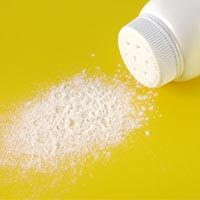
Botox is a wrinkle-smoothing material that it injected into the skin. It is shot into the muscle causing temporary paralysis of that muscle, getting rid of wrinkles. It usually lasts up to 6 months. Botox can be dangerous if it is not
administered properly by a professional. It is not administered to anyone under the age of 12 but is used for medical purposes for those 12-18 years old.
For a while, Botox was used for strictly medical purposes – to help control unnatural muscle spasms or excessive sweating, only recently it has been used for cosmetic purposes. It has been a popular 'anti-ageing' treatment because of the instant results.

DID YOU KNOW...one 'unit' of a Botox injection is enough to kill a mouse. and to paralyse the forehead it can use up to 60 injections!
A minority of people are may be allergic to Botox, so it is not administered to them. Some common side effects include: nausea, flu syndrome, respiratory infection, forehead drooping, eyelid drooping, and headaches.
Some of the lesser common side effects are redness, pain, swelling, numbness, bruising, muscle weakness and bleeding, which mainly come from the injection.
You may have problems swallowing, speaking, or breathing due to the lost usage of some muscles. Swallowing difficulties may go on for several months. It can also lead to tiredness, other muscles weakening and loss of bladder control.
Botox does not usually have any long-term side effects. Those who are taking anti-biotics are not allowed to have Botox and people are not allowed to have more than one injection every 3 months. 'Botox Parties' are also more common now, where people socialise and inject Botox not in a safe medical area.

 BEAUTY! BEAUTY! BEAUTY!
BEAUTY! BEAUTY! BEAUTY!











 If someone is unhappy with a tattoo, it is important to note that the removal of one may be even more painful than the tattoo itself and it can be very expensive. A tattoo that costs $50 can cost about $1,000 to remove. There are different methods to remove a tattoo including laser treatments, abrasion, scarification and surgery.
If someone is unhappy with a tattoo, it is important to note that the removal of one may be even more painful than the tattoo itself and it can be very expensive. A tattoo that costs $50 can cost about $1,000 to remove. There are different methods to remove a tattoo including laser treatments, abrasion, scarification and surgery.
